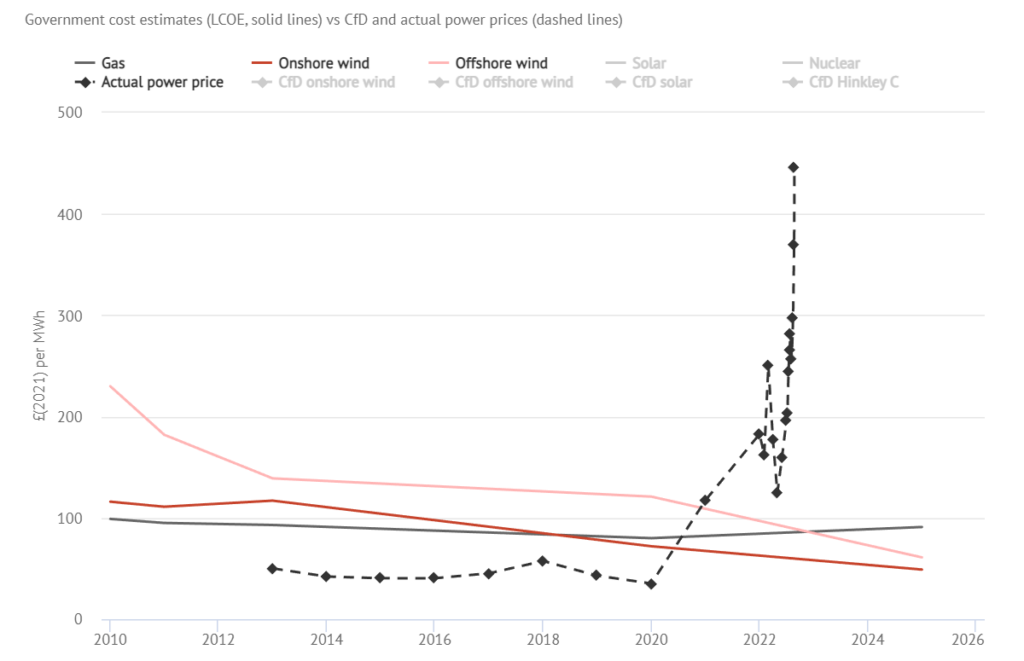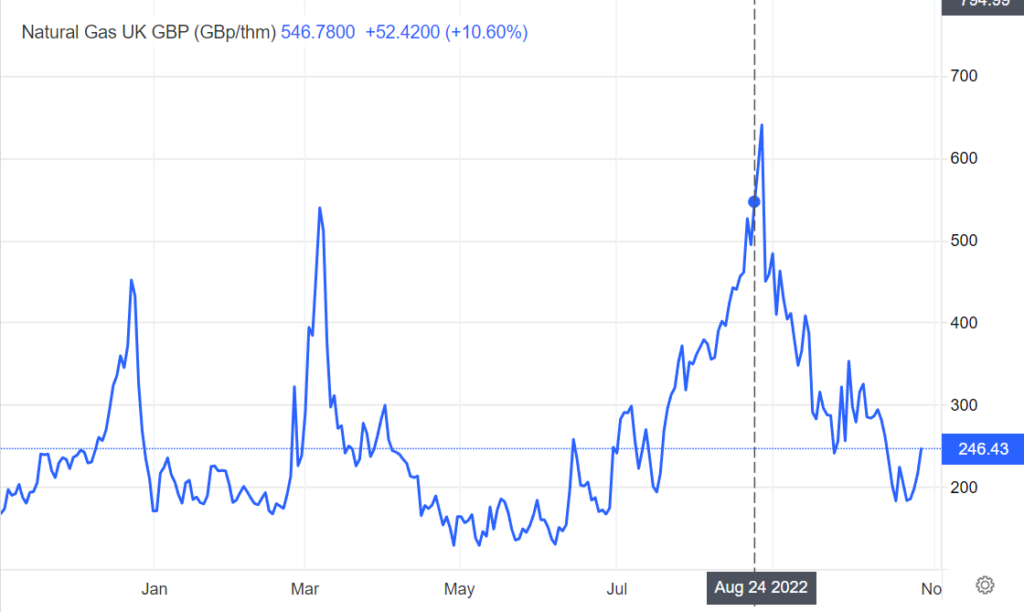In the wake of the recent natural gas price crisis, politicians and campaigners have claimed that wind power is “nine times cheaper” than power produced from gas plants.
The origin of the claim is the green-billionaire funded eco-propaganda blog, Carbon Brief, which published an article in July 2022 comparing wholesale electricity prices with “strike prices” offered by wind power developers, under the Contracts for Difference (CfD) scheme — the main element of the UK’s electricity generation capacity market.

But there are many problems with Carbon Brief’s claim.
High natural gas prices were caused by the following factors:
- Long term green policy throughout the EU and UK prohibiting or restricting natural gas exploration and extraction, including fracking.
- Lockdowns had caused gas production to be ramped down.
- The rising cost of capital for hydrocarbon energy projects, caused by, among other things, divestment and ESG campaigns aimed at financial institutions and investors, causing a collapse in investment over the 2010s. This also had the effect of compounding the problem of capital cost when lockdowns ended, making it harder to increase production.
- EU and NATO member states’ sanctions against Russia. The green agenda had caused EU members to make themselves dependent on Russian energy exports.
The first observation to make is that, not coincidentally, Carbon Brief’s own funders, and its sibling campaigning organisations, were instrumental in creating some of those problems, which caused natural gas prices to spike far above their historical average prices. They are campaigning organisations that have lobbied hard for policies to close coal and gas production and generation in Europe and the UK, and who proudly boast about their successes.
However, as the following chart shows, the above factors caused a massive spike above the cost of natural gas from a historic low in 2020.

The second observation to make about Carbon Brief’s analysis is that it was produced in July 2022, and updated on the 24th of August. The significance of this date is shown on the following chart of gas prices, which is zoomed into the year to date…

Carbon Brief’s analysis was made as European and British gas prices were peaking, from which the price fell significantly. If it was true that ‘wind power is nine times cheaper than gas’, it would only be true for a matter of days. It makes no more sense to compare the price of wind power to gas at such a peak than it would comparing wind power to the price of gas on May 24 2020, which was £8.34/therm — just 1/77th of its peak price in 2022. It is historical average prices that count. Moreover, the true potential cost of gas is much lower in a scenario in which more exploration and extraction had been permitted — fracking for example — rather than banned.
The third observation is that whereas natural gas prices were real, which is to say that the charts above indicate what traders were buying and selling gas for on the European markets, the Strike Prices offered by wind farm developers have never been achieved. Offshore wind farm operators have offered extremely low Strike Prices for power since 2017, driving many claims that the costs of the technology were falling. The first of these wind farms were due to start selling power to the grid this year. But rather than committing to the prices they had seemingly agreed to, they simply sold power at the market price, which Carbon Brief correctly reports as at the time £446/MWh. This reneging on their agreements has led to the Department for Business, Energy and Industrial Strategy to accuse wind farm operators of not acting “fairly”.
Finally, as Net Zero Watch have pointed out in their rebuttal of Carbon Brief’s claims:
Onshore wind is more than twice the long-term cost of gas-fired power and the cost is going up. Offshore is between three and four times as expensive, and is at best only coming down slightly.
The simple term for Carbon Brief’s claim that “wind power is nine times cheaper than gas” is untrue.
